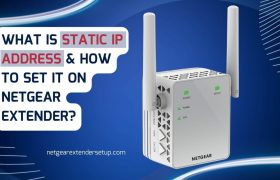In the realm of networking, a Static IP Address stands as a fundamental component, offering stability and control. Whether you’re a tech enthusiast, a business owner, or simply curious about networking, understanding Static IP Addresses is crucial. In this comprehensive guide, we delve into what Static IP Addresses are, their benefits, how to set them up, and address frequently asked questions.
What is a Static IP Address?
A Static IP Address is a fixed, unchanging number assigned to a device connected to a network. Unlike dynamic IP addresses, which are subject to change, a Static IP Address remains constant. This permanence enables reliable remote access, facilitates hosting services, and supports advanced networking functionalities.
Benefits of Using a Static IP Address:
- Stability: With a Static IP Address, your device maintains a consistent identity on the network, ensuring uninterrupted connectivity.
- Remote Access: Ideal for remote desktop connections, accessing security cameras, or hosting websites and servers.
- Hosting Services: Simplifies hosting services like email servers, FTP servers, and web servers, enhancing reliability and accessibility.
- Better Security: Static IPs enable more robust security configurations, such as stricter firewall rules and access controls.
- Improved Performance: By eliminating the need for IP address renewal, static addressing can enhance network performance.
Setting Up a Static IP Address:
Configuring a Static IP Address varies depending on the device and operating system. However, the general steps involve accessing network settings, entering the desired IP address, subnet mask, gateway, and DNS server information. Consult your device’s user manual or online resources for detailed instructions tailored to your specific setup.
FAQs (Frequently Asked Questions):
A static IP address range is a consecutive set of IP addresses assigned to devices or servers that remain unchanged over time.
Unlike dynamic IPs, which can change each time a device connects to a network, static IPs remain constant, facilitating consistent communication.
Static IPs are beneficial for servers, network devices, and services requiring uninterrupted access, like web hosting or remote access applications.
Depending on your network setup, you can often define a specific range of static IPs to allocate to devices within your network.
While they offer stability, static IPs don’t inherently enhance security. Proper network security measures are still essential.
Many ISPs offer static IP options for businesses or individuals needing consistent, identifiable internet access.
The size can vary, from a handful to hundreds or even thousands of addresses, depending on the network’s needs.
Conclusion:
In conclusion, understanding Static IP Addresses is essential for anyone involved in networking or IT infrastructure. From ensuring stable connections to enabling advanced networking functionalities, the benefits of Static IP Addresses are manifold. By following the guidelines provided in this post, you can harness the power of Static IP Addresses to enhance your network’s reliability, security, and performance.




